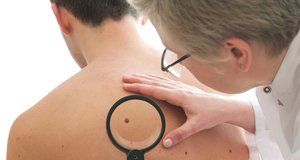SKIN CANCER & SURGERIES

Skin Cancer Procedures/Surgeries
Milligan Dermatology offers a variety of effective procedures to treat skin cancers of all types. If you are searching for a service that is competent in caring for you and your personal medical needs, do not look any further. Please call our office today to schedule a consultation or to learn more about any of these treatments.
We Care and Understand
Our staff is understanding and sensitive to each specific situation and we sympathize with the anxiety you may be feeling. We are fully equipped to evaluate and assist you during any potential surgeries you may need. We pride ourselves in taking the best care of all clients all while making sure you feel the same comfort of our own home.
Caring For All Your Medical Needs:
- Basal Cell Carcinoma
- Squamous Cell Carcinoma
- Melanoma
- Mohs Micrographic Surgery
All are explained in-depth below. Please continue to read and gain a better understanding of our treatments.


Basal Cell Carcinoma
A malignant tumor that is often associated with continuous sun exposure. It is the most common form of skin cancer, and usually appears in the form of pearlescent red lesions with light bleeding and scabbing. It is typically found in Caucasians with significant exposure to the sun. It is often locally aggressive, but rarely metastasizes. Facially, it often appears near the eyes and nose, with deep invasions and destruction. It can be treated with surgeries, and Mohs Micrographic Surgery can be used to treat Basal Cell Carcinoma of the face.
Squamous Cell Carcinoma
This is a malignant tumor which appears in the upper layers of the skin and is typically seen after chronic sun exposure. It is common in white-skinned individuals older than 50 years. Actinic Keratosis, a pre-cancerous lesion, can eventually become Squamous Cell Carcinoma.
In healthy individuals, metastasis is rare, but not unheard of. Patients who are or have been immunosuppressed typically have an increased rate of Squamous Cell Carcinoma. The face, including the tips of your ears, scalp, extremities, trunk, and shins are the most common areas of appearance.
These can usually be identified by thick, scaly lesions, which may bleed, and are often eroded or ulcerated. Keratoacanthoma, a subset of Squamous Cell Carcinoma, frequently develops within 2 to 3 weeks. Squamous Cell Carcinomas must be treated early to prevent further risk.
Melanoma
Melanoma is the most common lethal form of skin cancer. It affects mainly young and middle-aged people with fair skin. Roughly one-third of melanomas arise from existing moles, while the rest typically appear under clear skin.
Melanoma has been found to appear in increased numbers in persons with a family history of cancer, atypical or numerous moles, red-haired individuals, and those with fair skin or a history of sunburns.
Your skin should be examined at least once per year. Our staff of experienced clinicians can perform a comprehensive examination of your entire body.
Mohs Micrographic Surgery
Mohs Micrographic Surgery is a unique procedure that removes skin cancer with sparing skin tissues. Mohs allows for a thorough examination to ensure that all surgical margins are completely clear of tumors.
The surgery is usually recommended for facial treatments, where preservation is especially important. It can be used for aggressive tumors of all sizes, especially those larger than two centimeters. Mohs offers a cure rate of 97% – 99% for Basal Cell Carcinoma.
Milligan Dermatology Guides You Through the Process.
Call Milligan Dermatology today and schedule your appointment.
760-328-8884
Quick Links
Contact Us
Milligan Dermatology
35-200 Bob Hope Dr
Rancho Mirage, CA 92270
Tel:
760-328-8884
Email:
mpmderm@gmail.com
Follow us on Instagram: @milligandermatology

Privacy Policy
| Do Not Share My Information
| Conditions of Use
| Notice and Take Down Policy
| Website Accessibility Policy
© 2025
The content on this website is owned by us and our licensors. Do not copy any content (including images) without our consent.
